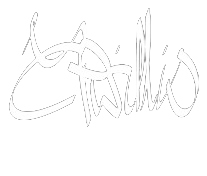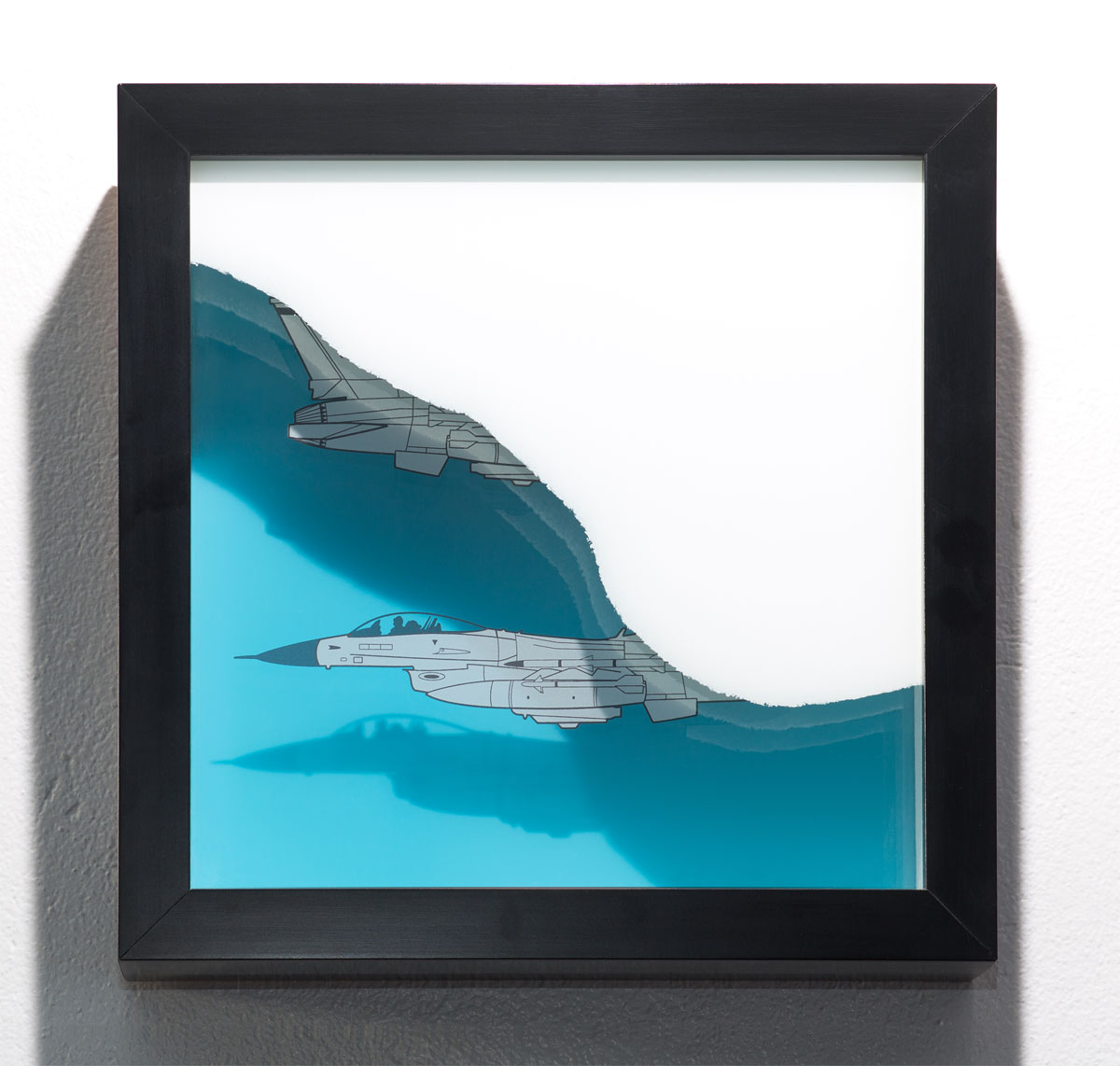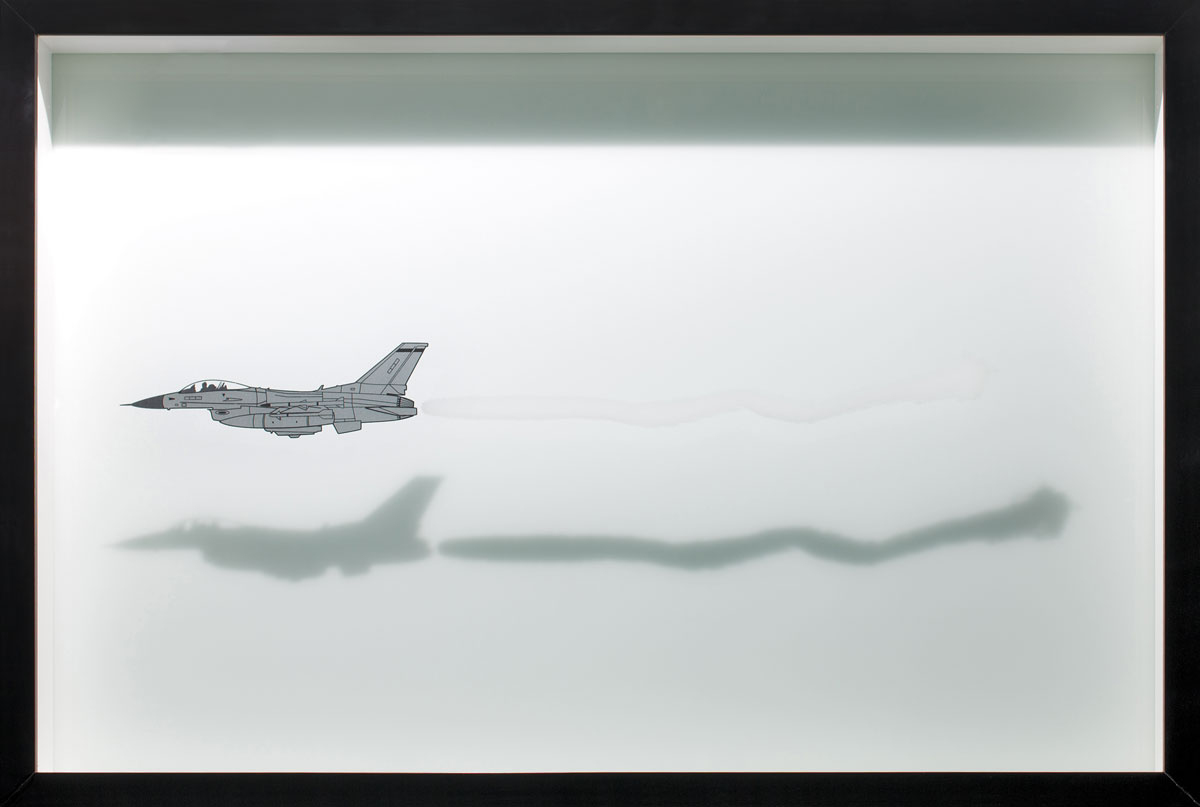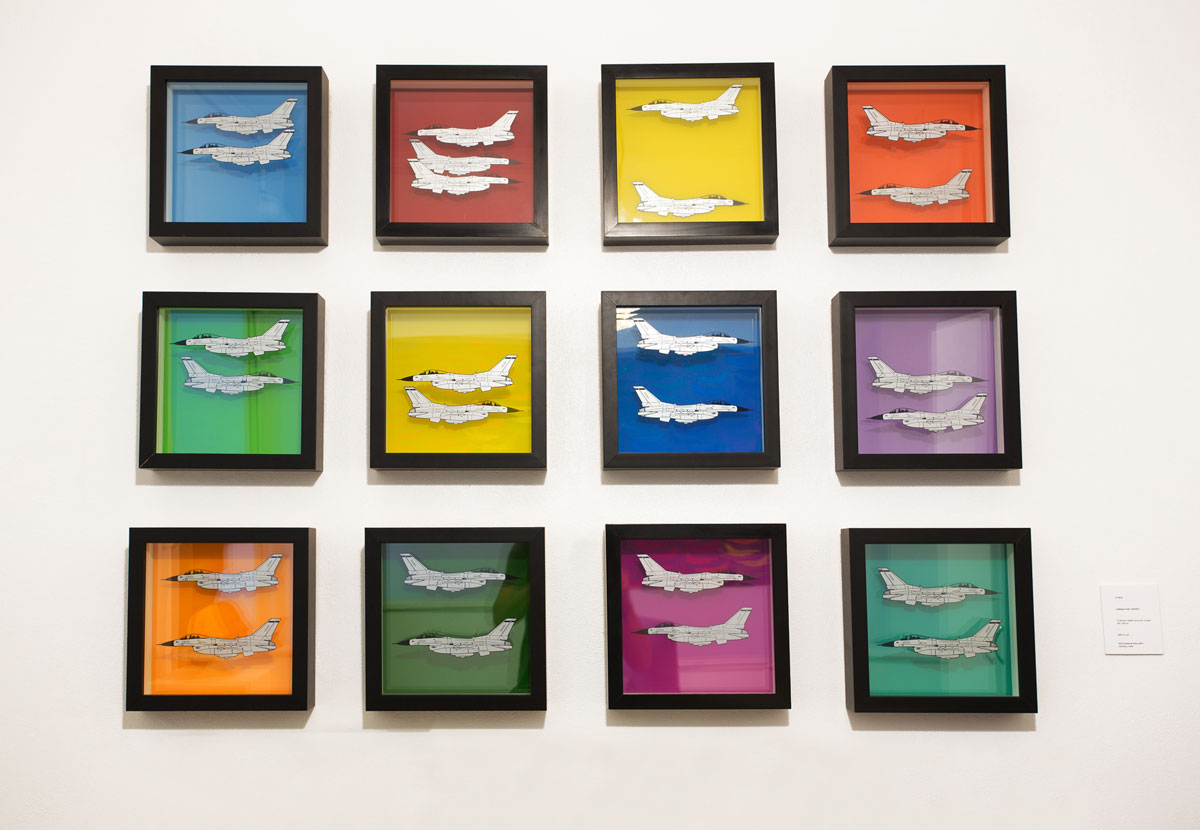Latest Exhibitions
Date: 29/05/2015
Gallery: 1st Avenue Gallery, Sawtell, Australia.
Review by Sara Bowen
Walking into the 1st Avenue Gallery in Sawtell I was reminded of the excitement of seeing acrobatics displays, the thrill of seeing fighter jets with their boisterous speed and agility, these birds of prey, in subsonic dog fights, boasting with sleek exhilarating tumbles and loops across the sky.
In this exhibition 'The Temple of Love' coloured planes fly up the walls leaving incandescent trails. JP Willis's precision cut shapes in smooth high gloss iridescent colours, modelled on McDonnell Douglas’s F15 fighter planes, leave vapour trails of neon lighting, across the gallery wall, with the workings concealed in a stylish white tower blocks that stands on its own as an complimentary sculptural piece.
The contrast between beauty and deadliness has been central to Willis’s work for a decade and is clearly visible in his current exhibition. Most of the pieces in this show are new, created at the end of a long process of experimentation with neon, which is absolutely in keeping with Willis’s way of working. He becomes absorbed in the materials, learning how they work and then bending them around to his way of thinking.
You can see this in his use of light. Willis uses Italian glass neon tubing to model two M1911 Colt 45s opposing each other in mirrored boxes in Love me as I love you. Gaudy, reflected a myriad times, the delicate Italian coloured glass contrasts love and death, hiding the bleakness of it all under the glitz and glamour. The glass tubing has a brittle quality and sticky colour that recall the neon signs of Vegas casinos and tawdry motels.
Altogether more subtle are the prints in the Looking for Love series: F16 “Flying Falcons” are printed precisely in reflective silver on sheets of glass and then layered in box frames. The controlled about the exactitude of the planes, caught in the moment of flying past each other transformed by light, shadows move these unbound planes around, fold them over and through their separated panes of glass, push out of the frames to edge down the walls. Every way you move changes them, and this is particularly apparent in two planes larger in separate frames, flying towards each other with their vapour trails billowing behind. Another artist might have shortened the trails or omitted them altogether, but Willis allows them to take up the larger part of the print, insubstantial, ethereal – a lingering, shadowed beauty following the singular mechanised harbinger of death.
Prints of multiple coloured fighter jets roll and climb the left-hand wall, a single black fighter jet shoots along the right-hand wall, its vapour trail knotted and twisted behind it.
The trashy colours of the guns in their shining boxes and the swirls of flexible neon trailing the F15s up the walls create a discharge glow in the gallery that somehow darkens the shadows. I left the party after dark, light spilling after me out onto the pavement.




















